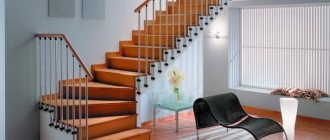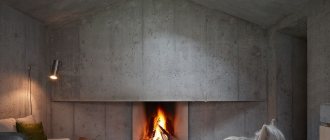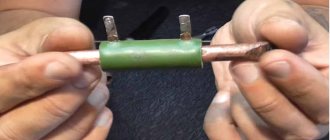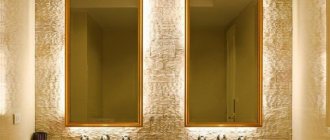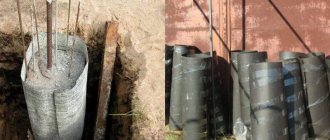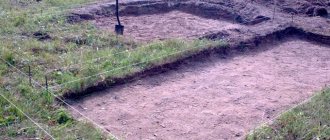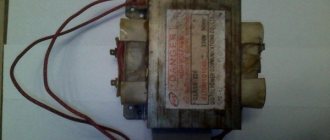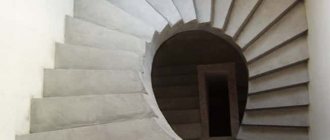Artificial stone is easy to use and costs less than real stone - moreover, you can make it yourself. Of course, it’s much easier to buy, but sometimes you need stones of a special texture and you can’t get them. Next we will talk about the features of such stones and the materials used for them, how to make the shape and the stone itself.
Features of artificial stone and material for it
Artificial stone has many advantages, including:
- Compared to natural materials, it weighs less - this helps during transportation, and is also useful during processing and installation.
- You can do without transportation at all, and make it right near the object on which it will be mounted.
- If the finished material is not enough, you can always make more.
- Quality can be controlled at all stages of production.
- The smooth back surface makes it easier to work with.
- They can be used to line stoves and fireplaces.
- Materials for production are inexpensive.
- You can make artificial stone of various textures, sizes, shapes, colors, and so on - completely to your liking.
Among the disadvantages of artificial stone, it is worth highlighting first of all its fragility in comparison with natural stone. However, the service life is far from short: approximately 30-40, in some cases 50 or more years. But in order for an artificial stone to last a long time, it must be made from high-quality materials according to an exact recipe. It is not always easy to comply with it - this can also be considered a minus.
It’s worth briefly going through the main materials and manufacturing methods:
- Artificial stone made of cement. In addition to the cement itself, it also requires dry sand, pigment and polymer additives are added. The result is a stone that is both durable, moisture-resistant and chemically inert. It is quite easy to restore and can imitate almost any natural stone.
- Based on gypsum. Since gypsum construction has been around for a long time, the technology is well established. Its advantages: low specific gravity, good sound and heat insulation, maintainability. Water and pigments are added to the plaster. Gypsum does not withstand strong temperature changes, so it is usually used for interior cladding, and stone is made from it in the warm season or indoors.
- Acrylic stone mostly consists of a mineral filler, as well as stone chips - it can be made of marble, granite, jasper, sandstone and other rocks. Acrylic resins act as a binding component. The production process is complex, so it is much less common to make such stones yourself. Their advantages: complete moisture resistance, strength, wear resistance, ease of cleaning and low weight.
- Quartz stone is made from quartz and polyester resin. The manufacturing technology is similar to that used for acrylic artificial stone. In terms of properties and scope of application, quartz is also similar to it; Thanks to the polyester resin, it is not afraid of tensile and bending loads; it performs well in conditions of both high and low temperatures.
- The flexible stone consists of two layers: fiberglass and a decorative coating. The key property is flexibility, which greatly simplifies finishing. It is easy to process: you can simply cut it with a knife to give it the required shape, and no problems with the edges such as delamination will arise. Flexible stone has a number of other advantages: it weighs little, is non-flammable, antistatic, waterproof and vapor permeable - as a result, it is quickly gaining popularity, including increasingly being made by hand.
Artificial stones are also made from other materials - there are many more, so they will not be described all. Next, cement and gypsum are discussed in more detail - these materials are easier to use than others, which is why they are the most popular.
How to make an artificial boulder for the garden with your own hands
Do-it-yourself artificial boulder is popular in the field of landscape design:
- does not require large financial outlays;
- easy;
- lasting;
- environmentally friendly;
- resistant to weather changes;
- has many colors and textures.
To watch a video of what the product looks like in a landscape:
Necessary materials for making stone
To make an artificial boulder with your own hands, you do not need hard-to-find materials. The bulk is represented by secondary waste (construction waste).
Preparing a solution for the future stone
How to make a mold
Before you start working on the stone itself, you need to make a mold for it. Although you don’t have to do this, but simply buy ready-made ones, making it yourself is not too difficult a task. The mold can belong to one of about a dozen varieties; the easiest one is to make a silicone one - it is the process of its manufacture that will be discussed further.
- First you need formwork. The material for it can be PVC panels, plastic containers and the like. Mark the template with a 1 cm allowance from the edges and cut it out.
- Prepare hot soapy water.
- Apply lubricant inside the formwork (you can use grease).
- Place the sample inside, having also lubricated it first.
- Squeeze out the silicone.
- Soak the brush in soapy water, coat the silicone and press it in, do not forget to constantly foam the water and dip the brush in it. Make sure there are no gaps between the silicone and the surface of the sample stone.
- When you're done with this, all that remains is to use a spatula, also previously soaked in soapy water, to level the surface with it.
The silicone will take a long time to dry: about a centimeter per week, so it’s best to start making molds well in advance. When it dries, the formwork will need to be disassembled and checked to see if there are any cracks. If they are found, cover them with fresh silicone. Using one matrix, you can make about a dozen stones, after which it becomes deformed - so you should immediately calculate how many forms you will need.
Manufacturing process
It doesn't matter which option you choose. Any will include several stages: selecting materials, mixing, laying in shape and drying.
You can find a high-quality form in any hardware store, but you can actually make it yourself.
Boulder made of sand, water and cement
To make your own stone from sand, cement and water, first of all, you need to mix all these ingredients. Then add dye diluted with water to the resulting solution.
The next stage is to pour the solution into the mold, lay a reinforcing mesh on top, and then fill it again with the remaining solution.
When the product begins to dry, rub it with a nail, screwdriver or piece of wood. After 15-16 hours, it is removed from the mold and left to dry completely in a ventilated area for 12-14 days.
Gypsum stone
The principle of creating this stone is the same. Only plaster hardens much faster. Therefore, there is no need to make large portions.
The clean mold is greased with oil, the gypsum solution is mixed with dye, poured into the mold, the mesh is laid and the solution is poured again.
Making wild stone
This production method is different from the standard one. You will need:
- tile adhesive,
- black grout for seams,
- pigment for coloring.
The glue is mixed thickly. Then divide the mixture into three parts. Pigment is added to one, grout to another, and the third is left as is.
Next, the mixtures are randomly laid out and pressed, the surface is sprinkled with sea salt or other similar powder to add exclusivity.
By the way! It will be interesting to know: Pinotex: manufacturer of compositions for external treatment of wooden facades
Cover everything with plastic wrap, roll it out, leveling the surface and pressing the top material into the general layer. Then they form a shape according to the required dimensions.
Unique stones or tiles should harden within 24 hours. After drying, wash the surface and cover with artificial varnish.
The result is a material that is excellent for wall cladding and other decor. The price of such tiles turns out to be cheaper than in the store.
Polyurethane foam stone
For this you will need:
- polyurethane foam (2-3 tubes);
- base (basin, paper or other);
- enamel, colors at your discretion;
- brushes, solvent;
- moss;
- PVA glue.
They can use any base, even paper. Form a hemisphere. Foam the surface. Use a knife to remove unnecessary places, leveling them.
Painting is carried out after the foam has hardened. First, make the main layer, then, before it dries, use a second, but lighter paint, maybe even white. To make it more natural, you can glue moss.
Hollow decorative stone
Buy car putty. Prepare fiberglass, epoxy resin, paper, scissors, cling film, tape, spatula, sandpaper, sand, gloves.
Artificial fabric cobblestones
How to cast stone from cement
To make a mortar, add one part cement to three parts sand. You can take less sand, then the stone will be stronger. Mix the sand and cement, then gradually begin adding water and dye, constantly stirring the solution. Its consistency should ultimately resemble very thick sour cream. To increase ductility, you can add glue.
If you need to make a cobblestone, then you don’t need a mold at all; in other cases it will be required. Before you start pouring the solution, you need to paint the mold - this way the dye will stick better. Little by little it will need to be added to the solution from the very beginning to the end of mixing - however, some people do the filling in two layers and do not add dye to the second. You need to take it from 3% to 7% of the weight of the mixture, it depends on the quality of the dye itself, the cement, and also how intensive staining is necessary.
When the filling is half done, you need to add synthetic mesh for reinforcement. Instead, fiber fibers can be poured into the solution. After reinforcement, pouring continues until the form is filled. Vibration is carried out all the time to compact the mass, so work must be done on a vibrating table. You need to make grooves on the surface of the mixture so that the stone will stick better.
12 hours after pouring, it can be removed and closed in a plastic bag, where the concrete will gain strength. After use, the mold should be washed with dish soap - this will help it stay in good condition longer. The surface of the stone should be covered with drying oil - this way dust will not stick to it and the dye will last longer.
Previously, we wrote about how to make a concrete countertop.
How to paint artificial stone
There are two ways: adding powder dyes to the composition or applying paint to the surface of finished stones. Use iron oxide paints to paint surfaces.
In the photo - powder paint
Red iron oxide pigments
In terms of quality and price, they satisfy users. If you are making a small number of stones, then you can use multi-colored acrylic pigments; they are diluted in any primer. The paint adheres well to the surface and has good performance characteristics. It is better to paint with a pneumatic spray gun; if you don’t have one, use a brush. Follow three rules:
First paint the base of the stones, then the seams, the surface decoration is done last. That's all, the material is ready, you can start laying it on the surface of the facade walls. Always remember one rule: without theory there is no practice, and without practice there is never a quality product.
How to paint artificial stone
Practical advice. While the paint is not completely dry, wipe the surface of the stones with a slightly damp hoe. Due to this, the front side will take on a more natural appearance, minor mechanical damage will become less noticeable.
Powder paint prices
How to make a stone from gypsum
The process is similar to how stones are made from cement and sand. First you need to prepare the water: the gypsum solution hardens very quickly, 5-8 minutes are enough, so if more time is needed, you should add citric acid to it in advance - about 1 gram per liter or a little more. With it, the solution will remain liquid for more than an hour.
If a coloring pigment is needed, it is also added to the water immediately, approximately 3-7% of the mass of the prepared gypsum, after which it is mixed well. To find the optimal color, you can make several test stones, adding different amounts of dye.
Sometimes it is not added at all and the result is a white stone, which is then tinted. This should be done with several brushes of different widths, and not try to paint even strokes - on the contrary, the more chaotic the color of the stone, the more natural it will look. To make the paint stick better, the stone should be varnished, but you need to use a matte one. If the stone is lying in a dry room, you do not need to use varnish.
To decorate, you can pour a little sand, pebbles, beads or ash into the mold in advance - in the latter case, the stone will look beautiful only from a distance.
Sand is often added to gypsum - it makes the stone stronger; the usual ratio is 10:1. After this, the mixture is added to water at a ratio of 3:2 and mixed until smooth.
The form for pouring must be coated in advance; for this, a composition of turpentine and wax is usually used. The solution is poured into it until it is full, leveled with a spatula and left until it hardens. Then the stone is removed from it, dried - and it is ready. It is better to use it only indoors, but if it is well processed and impregnated, it is also suitable for exterior decoration.
An article on the topic was previously posted: read >>
How to make a hollow boulder from burlap and cement
Large stones look very impressive in the landscape and can decorate any area. Natural stone is not cheap. Therefore, many try to make it with their own hands from burlap (or other fabric).
You will need the most accessible materials:
- sackcloth,
- cement,
- sand,
- mesh for the frame.
First, prepare a solution of cement (1 part cement to 3 parts sand), water and sand. Soak the burlap in the resulting liquid solution.
By the way! It will be interesting to know: Which sand is better to take for bricklaying
A frame for the cobblestones is made. Can be made from chain-link mesh. The frame can be built from bags of garbage. Place them together and secure them with tape.
Place soaked burlap on top of the frame and smooth it out with your hands. An additional layer of mortar can be applied on top to create a realistic stone shape.
After the boulder hardens, the top is painted with acrylic facade paint. Indistinguishable from natural!
Advantages of artificial stone made of concrete and cement
Recently, cement has been actively used for the manufacture of decorative stone and brick. Using this material, it becomes possible to veneer almost any surface with significant advantages over natural stone:
The photo shows a facade made of decorative (artificial) stone made of cement
Now it is very fashionable to use concrete tiles in the street decoration of cafes, restaurants, parks, as well as shops and office premises. It looks prestigious, fashionable and modern.


